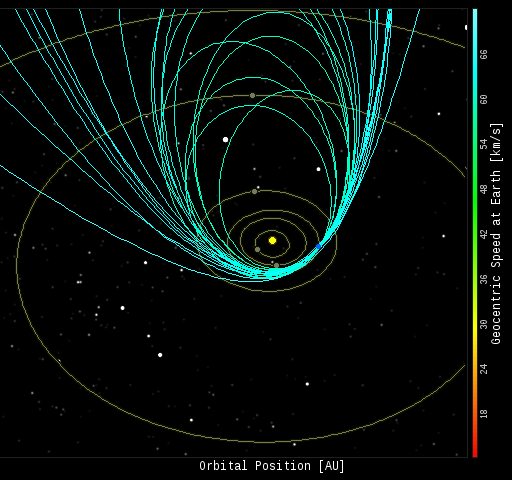The epsilon Perseid shower peaks every year around this time, but the shower is not well known because it is usually weak, producing no more than 5 meteors per hour. In 2008 the shower surprised observers with an outburst five times as active, and this year the shower may have doubled even that. Clearly, the epsilon Perseid debris stream contains some dense filaments of material that Earth usually misses but sometimes hits.
No one knows the source of the September epsilon Perseid meteor shower. Whatever the parent is, probably a comet, its orbit must be similar to the green ellipses shown in the orbit-map above. As NASA cameras continue to gather data on this shower, orbital parameters will become more accurately known, possibly leading to a match.
Meanwhile, sky watchers should be alert for more epsilon Perseids in the nights ahead. The shower is waning but still active and more outbursts are possible. http://spaceweather.com/

 RSS Feed
RSS Feed